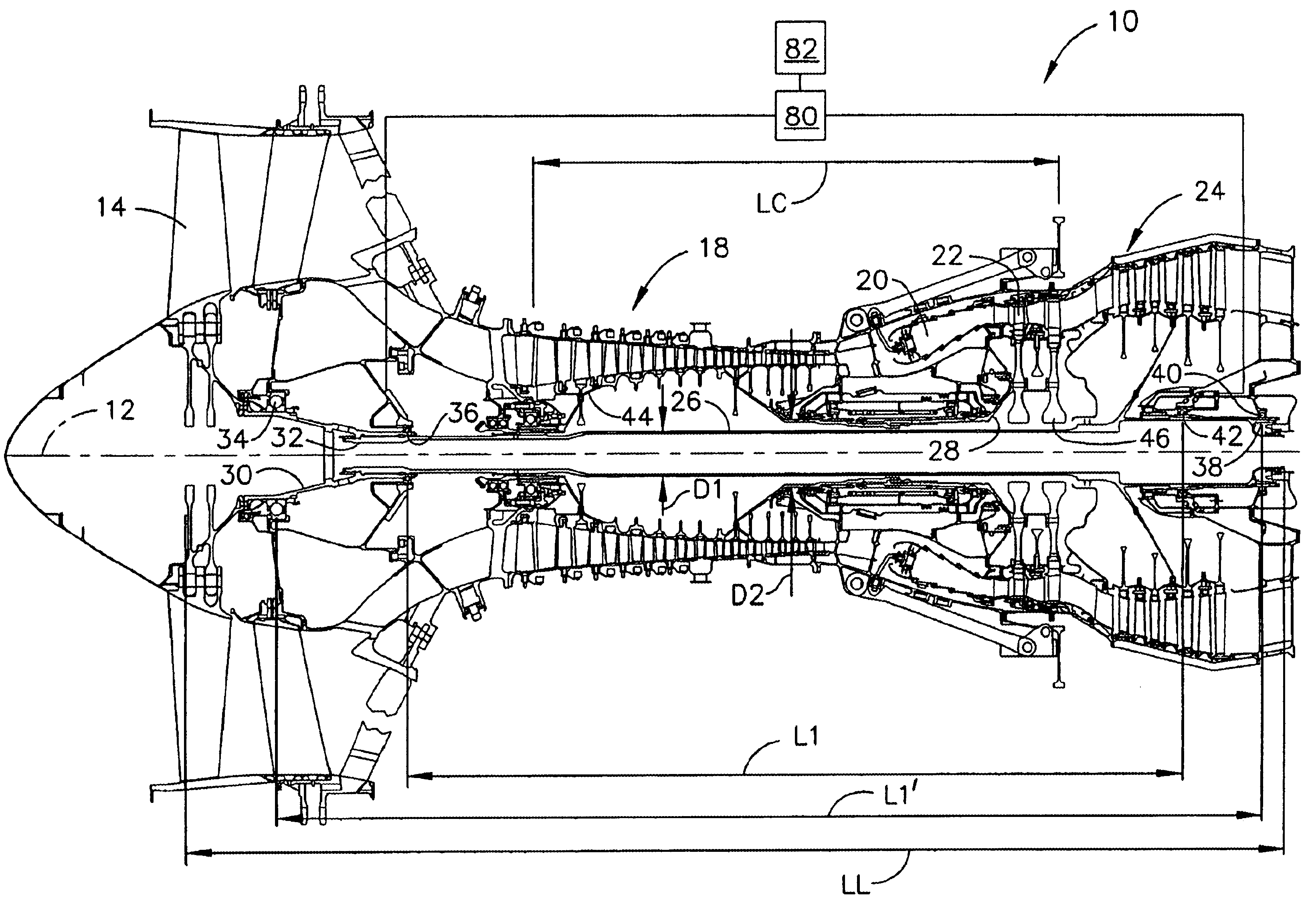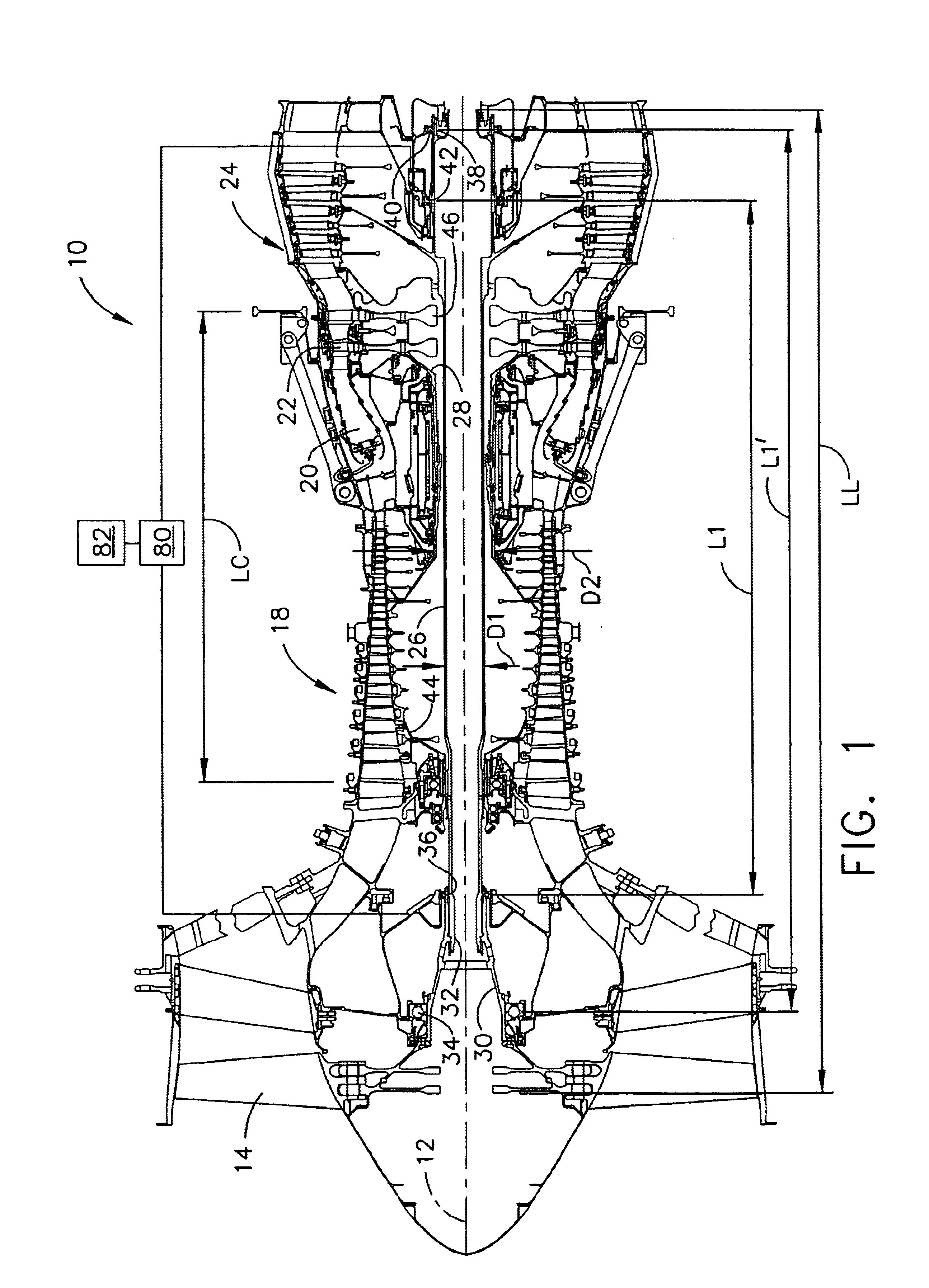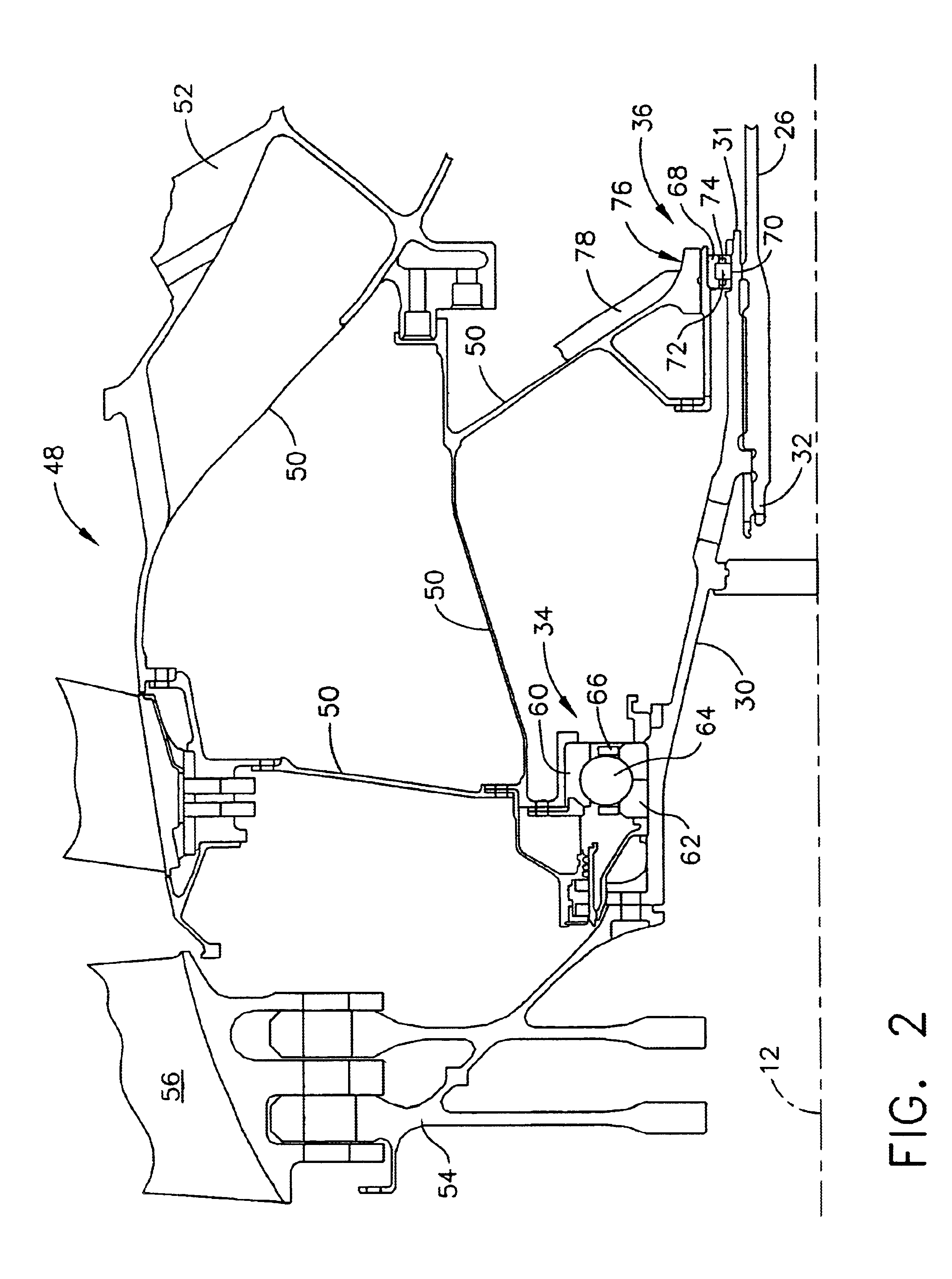Method and apparatus for varying the critical speed of a shaft
a critical speed and shaft technology, applied in the direction of liquid fuel engines, vessel construction, marine propulsion, etc., can solve the problems of compromising the ability to use these design solutions, affecting the design of the machine, and not being able to operate a rotating sha
- Summary
- Abstract
- Description
- Claims
- Application Information
AI Technical Summary
Problems solved by technology
Method used
Image
Examples
Embodiment Construction
Referring to the drawings wherein identical reference numerals denote the same elements throughout the various views, FIG. 1 shows an exemplary turbofan engine 10 incorporating the critical speed modification system of the present invention. The engine 10 has several components in serial flow relationship along a longitudinal axis 12, including a fan 14, a compressor 18, a combustor 20, a high pressure turbine 22, and a low pressure turbine 24. The low pressure turbine 24 drives a low pressure turbine (LPT) shaft 26 which is splined to a fan shaft 30 that drives the fan 14. The high pressure turbine 22 drives the compressor 18 through a core shaft 28 that is mounted coaxially with and surrounds the LPT shaft 26.
The LPT shaft 26 has a length LL and a diameter D1, and is mounted in a plurality of bearings, which are typically a combination of rotating element (e.g. ball or roller) bearings. In the illustrated example, the forward end 32 of the LPT shaft 26 is supported by a forward be...
PUM
 Login to View More
Login to View More Abstract
Description
Claims
Application Information
 Login to View More
Login to View More - R&D
- Intellectual Property
- Life Sciences
- Materials
- Tech Scout
- Unparalleled Data Quality
- Higher Quality Content
- 60% Fewer Hallucinations
Browse by: Latest US Patents, China's latest patents, Technical Efficacy Thesaurus, Application Domain, Technology Topic, Popular Technical Reports.
© 2025 PatSnap. All rights reserved.Legal|Privacy policy|Modern Slavery Act Transparency Statement|Sitemap|About US| Contact US: help@patsnap.com



